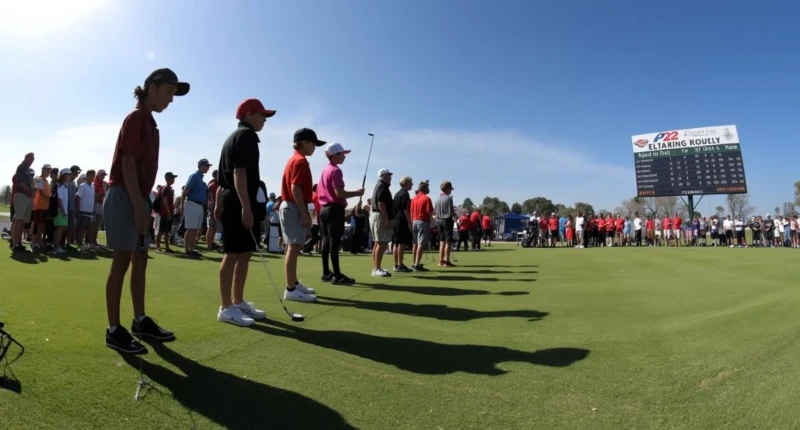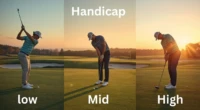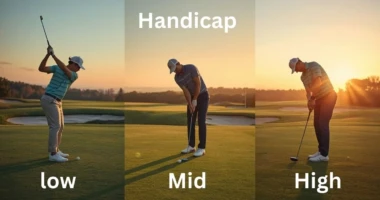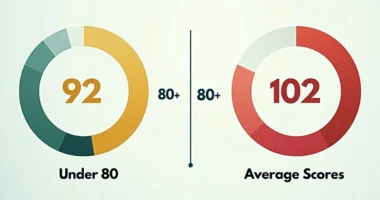Junior golf has grown into one of the most exciting pathways for young athletes aiming to play college or even professional golf. If you’re a parent, coach, or junior golfer, chances are you’ve already heard about the Junior Golf Scoreboard (JGS). But what exactly is it, and how does it work?
The Junior Golf Scoreboard is often described as the “report card” for junior golfers. It tracks scores, ranks players, and provides a centralized system that college coaches use to evaluate future recruits. In short, if you’re serious about junior golf, understanding how the JGS works is essential.
What Is the Junior Golf Scoreboard?
The Junior Golf Scoreboard is an online ranking and results system designed specifically for junior golfers (ages 12–19). It collects results from thousands of tournaments across the United States and internationally, then compiles them into a ranking system.
Think of it like the “leaderboard” of junior golf. Just like professional golfers have the Official World Golf Ranking (OWGR), juniors have the JGS rankings.
Key Features of the Junior Golf Scoreboard
- Centralized Database: Stores scores and results from approved junior golf tournaments.
- Ranking System: Ranks players based on performance, field strength, and consistency.
- Player Profiles: Every golfer has a profile that shows their tournament history and scoring average.
- Recruiting Tool: College coaches heavily rely on JGS to scout new talent.
How Does the Junior Golf Scoreboard Work?
The Junior Golf Scoreboard operates using a points-based ranking system. Here’s how it works step by step:
1. Tournament Results Collection
- The JGS gathers results from over 2,000 junior golf tournaments each year.
- Only recognized and approved events count toward rankings.
2. Player Scoring Averages
- Every player’s average score is calculated from their most recent 12 months of play.
- The lowest tournament rounds carry more weight, showing consistency and talent.
3. Strength of Field
- The ranking system doesn’t just look at raw scores.
- A high finish in a strong field (with top-ranked players) is worth more than winning against a weaker field.
4. Dropping Outliers
- To ensure fairness, extremely high scores (bad rounds) may be dropped from calculations.
- This helps reflect a player’s true ability rather than a single bad day.
5. National Ranking
- Rankings are updated weekly.
- Players can track their progress against peers nationwide.

Why Is the Junior Golf Scoreboard Important?
1. College Golf Recruiting
For many junior golfers, the JGS is the gateway to college golf scholarships. College coaches use the JGS to:
- Compare players across different regions.
- Evaluate consistency over time.
- Spot rising talent early.
2. Performance Benchmarking
Players can use their JGS profile to:
- Track improvement.
- See where they stand against competition.
- Set realistic performance goals.
3. National Recognition
Success in JGS-ranked tournaments brings:
- Higher visibility.
- Invitations to elite junior events.
- More chances to compete at the next level.
How to Get Ranked on the Junior Golf Scoreboard?
Many young golfers wonder: “How do I get on the JGS rankings?”
Step 1: Play in Recognized Tournaments
- Only tournaments that meet JGS standards count.
- Examples include AJGA events, state championships, and national invitationals.
Step 2: Post Competitive Scores
- Strive for consistent rounds in the 70s (depending on age group).
- Remember, consistency matters more than one lucky round.
Step 3: Build a Strong Tournament Schedule
- Playing in more events means more chances to improve your ranking.
- Balance local events with national-level tournaments.
Step 4: Keep Your Profile Updated
- Make sure your name, age, and graduation year are correct.
- Update your profile to highlight improvements.
Tips for Improving Your Junior Golf Scoreboard Ranking
- Focus on Consistency: One great round isn’t enough. Work on keeping all rounds competitive.
- Play Against Strong Fields: Even if you don’t win, playing against tougher competition boosts ranking points.
- Short Game Practice: Most strokes are lost within 100 yards. A strong short game improves scoring averages.
- Fitness & Mental Strength: Junior golf is both physical and mental. Conditioning and mindset are key.
- Track Your Stats: Monitor fairways hit, greens in regulation, and putts per round. Improvement here = lower scores.
Common Mistakes to Avoid with the Junior Golf Scoreboard
While the Junior Golf Scoreboard is an excellent tool, many young players and parents fall into common traps:
- Obsessing Over Rankings: Constantly checking the position after every round can create unnecessary stress. Focus on steady improvement instead.
- Ignoring Small Tournaments: Some think only big tournaments matter, but every event adds valuable experience and ranking points.
- Comparing Too Much: It’s tempting to compare with top-ranked players, but each golfer develops at a different pace.
- Not Understanding How Rankings Work: Misinterpreting scoring rules or tournament weight can lead to false expectations.
- Neglecting Mental Strength: The scoreboard tracks numbers, but it doesn’t measure confidence, focus, or resiliency, all of which are just as important.
By avoiding these mistakes, young golfers can use the Junior Golf Scoreboard as a motivational tool instead of a source of pressure.
FAQs
1. Is it free to use the Junior Golf Scoreboard?
Yes, anyone can view player profiles and rankings online for free.
2. At what age can a player appear on the JGS?
Players typically appear starting at age 12, once they compete in eligible tournaments.
3. Do international players get ranked?
Yes! Many international junior golfers appear in JGS rankings if they play approved events.
4. How often are rankings updated?
Rankings are updated weekly, so players can see progress quickly.
5. Do college coaches rely only on JGS?
No. They also look at character, academics, and references, but JGS is a major factor.
Conclusion
The Junior Golf Scoreboard is more than just numbers; it’s the roadmap for junior golfers chasing their dreams. By tracking scores, highlighting talent, and providing visibility, it connects young athletes with opportunities at the collegiate level and beyond.





